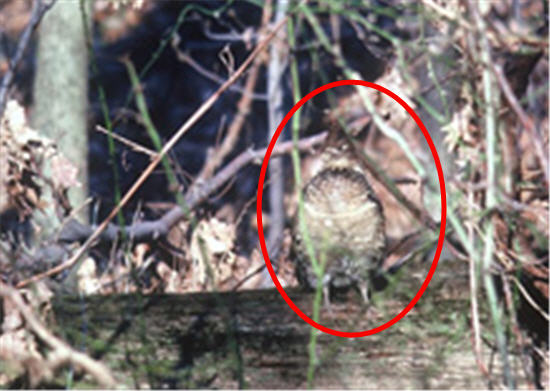Jeremiah Wood, a biologist for the State of Maine, works through various aspects of fur trapping in this second part of his guest series. (Read part one, Five Reasons to Reconsider Trapping, here.)
For the uninitiated, trapping can seem disconcertingly complex. Trappers target a wide variety of fur-bearing animals all across the landscape, using very specialized tools and equipment on the trapline. Just look into the bed of a trapper’s pickup truck and try figuring out which item does what and where it’s used. The jumble of gear is enough to make your head spin. But once you figure it out, traps and their use are really not that complicated.
Traps can be broken down into three basic types: footholds, body-grips and hunting snares. Each is distinct from the others and has its own unique purpose on the trapline.
Table of Contents
Foothold Traps
Foothold traps have been around almost since trapping began. Though some are complex, all footholds operate on a simple premise: the target animal steps on a pan in the trap’s center, tripping a trigger and causing spring-loaded jaws to close and grip the animal’s foot. Foothold traps are the most traditional, popular and effective trap used today. Every fur-bearing species can be caught with foothold traps and they come in a wide variety of styles, shapes and sizes.
The three main types of foothold traps are categorized by the springs that strengthen them. Long spring traps are the traditional footholds constructed with long, flat steel springs that power the jaws closed. Jump traps are powered by a single, short, flat steel spring situated underneath the jaws. Coil spring traps are a modern version of the jump trap, instead using coiled music wire springs to lift levers that power the jaws shut.
Foothold traps have a wide variety of applications on the trapline, from catching marten in the wilds of Arctic Alaska to beaver trapping in the swamps of Louisiana and most places in between. One significant benefit of foothold traps is that, when used properly, they allow for the unharmed release of any non-target animals. Foothold traps are the most common tool used to trap predators like foxes and coyotes, and are commonly used in wildlife management applications. In fact, footholds have been critical to the success of numerous furbearer studies and relocation efforts by state and federal wildlife biologists throughout the country.
Body-grip Traps
The body-grip trap, often referred to as the ‘Conibear,’ was revolutionized by trapper and inventor Frank Conibear in the 1950’s. It was offered as an alternative to the foothold trap in situations where a quick, humane kill of the captured animal was desired. The basic design of the trap includes two square jaws made of round steel in a box-shaped design, powered by one or two springs of the same material. When the springs are compressed, the jaws form an opening for an animal to enter, tripping a trigger in the opening when it travels through. The jaws then close shut, proving an almost instant kill.
Because of their lethal design body-grip traps aren’t useful in all situations, especially near civilization, where there’s potential to catch the neighbor’s dog or cat. They are most commonly used in water trapping, particularly for beaver, mink and muskrats, in wilderness trapping far from the beaten path and in other situations when precautions are taken to avoid non-targets. The body-grip trap was truly an innovation that filled a need in the trapping world and has greatly enhanced trappers’ ability to address animal welfare issues and capture some furbearers far more effectively.
Snares
While it appears the most simple, the snare may just be the most complex tool in the trapping industry. Type of cable and wire, diameter, orientation, breaking strength, lock types, stops, swivels, breakaways and a number of other components make snares incredibly customizable. If you know what you’re doing, you can create just the right snare for most any trapping situation.
Snares can also be fairly controversial, due to their past reputation for catching non-target animals. But advancements in snare technology have made much of that controversy a thing of the past, and many states are expanding snaring opportunities for trappers who know how to use them right. For instance, snares once would catch the occasional deer. Using a stop that limits loop size closure eliminates deer capture. When a large animal like a mountain lion or elk is captured, a breakaway allows them to power out of the snare, breaking it open and freeing them from capture.
Traditional snares used to kill some non-target animals. Using a relaxing lock instead of a kill-type lock allows a snare to hold an animal gently, effectively rendering the snare something we now call a “cable restraint.” In other situations where a quick kill is desired, springs and poles can be used to make that happen incredibly effectively. What was once a simple wire loop has now transformed into one of the most useful and adaptable tools at a trapper’s disposal.
Between footholds, body-grips and snares, a trapper’s arsenal can seem pretty complex—and perhaps it needs to be. Like everything else, trapping has changed with the times. Advances in technology have continued to make traps more efficient and effective, helping trappers continue to responsibly harvest wild fur. And if you’re looking to get into trapping, these advancements have made for a great set of tools to help start the journey.
Jeremiah is a biologist with the State of Maine and runs Trapping Today, a website dedicated to providing information and entertainment to the modern trapper. Find more from him at www.trappingtoday.com.
header image: Day Six Outdoors








![Air gun 101: The differences between .177 & .22 – Which jobs they do best ? [Infographic]](https://airgunmaniac.b-cdn.net/wp-content/uploads/2024/11/1773-218x150.jpeg)
















































 Buy the Benchmade 940 at BladeHQ
Buy the Benchmade 940 at BladeHQ


















